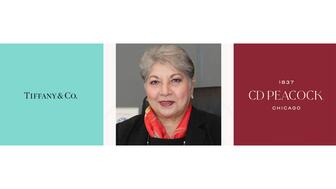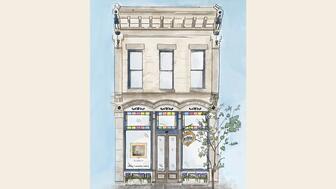Squirrel Spotting: Price Has Nothing to Do With Value
Price is a number written on a tag while value is how good a customer feels when they leave your store, Peter Smith writes.

According to biographer Tilar J. Mazzeo, author of “The Secret of Chanel No. 5,” when Beaux was experimenting with different ingredients in the process of creating the fragrance, he added generous amounts of jasmine from the perfume capital of Grasse in the South of France.
In doing so, Beaux felt it necessary to warn Coco Chanel that a perfume with so much jasmine would be “fabulously expensive,” to which she reportedly replied, “In that case, add even more.”
Chanel’s exhortation to effectively add more cost to the fragrance was uttered in 1920, decades before we would come to understand the effects of pricing psychology on consumer behavior.
Her statement foreshadowed the 2021 words of Shankar Vedantam, who wrote “If you want to heighten people’s expectation of a product, just raise its price,” in his book “Useful Delusions: The Power & Paradox of the Self-Deceiving Brain.”
Absent the subsequent reams of scientific data on pricing psychology available in recent years, it was Chanel’s experience and instincts that convinced her consumers would be more apt to embrace Chanel No. 5 if it carried a premium price.
She believed higher prices were essential to communicating the product as being of exceptional quality, and she was neither wrong nor alone in that belief.
Michael J. Silverstein and Neil Fiske wrote about Ely Callaway (golf) and Jim Koch (Sam Adams beer) doing the same thing with their respective brands in their book, “Trading Up.”
When Koch introduced Sam Adams, he priced the beer at a 100 percent premium to Budweiser, and a 50 percent premium to Heineken, and still became the largest specialty brewer in the country.
But Chanel, Callaway, and Koch didn’t take average products and artificially prop them up by arbitrarily charging more.
They knew their brands had to deliver an exceptional product and experience, so they infused excellence and quality into the very DNA of their brands during the development process, setting the highest bar for customer expectations.
Tim Calkins, a professor at the Kellogg School of Management at Northwestern University, wrote about an experiment in which students were asked to estimate the cost of a pair of earrings they’d been shown.
The experimenter asked the students to provide three estimates on the earrings.
The first estimate was based on the presumption that the earrings were generic, the second as if they had come from Walmart, and the third as if they had come from Tiffany & Co.
The students estimated the unbranded earrings at $550. They estimated the Tiffany earrings at $873, an increase of 60 percent over the generic.
Lastly, they estimated the earrings at $81 if they believed they had come from Walmart.
That means the students estimated the earrings from Walmart at a reduction of 91 percent versus Tiffany and 85 percent versus generic.
The results of the experiment prove Hermann Simon’s point in “Confessions of the Pricing Man,” in which he states: “Price is likely to serve as an indicator of quality when buyers are uncertain about a product’s underlying quality. This happens when they are confronted with a product that is entirely new to them or one which they rarely buy.”
The students, knowing very little about jewelry, made their estimates based on the association, good and bad, with two retailers at the opposite ends of the pricing/quality continuum and the unknown entity of generic.
The perceptive value demonstrated by the students, however, does not tell the whole story. Believing that a product is worth more has been shown by scientists to actually register neurologically, to the point that you really do enjoy it more.
Your perception, as it happens, becomes your neurological reality.
Supposing that customers are all driven to find the best price when they enter a store defies both logic and consumer psychology.
First of all, a significant number of customers spend considerably more than their stated budgets when they shop. That alone should put to rest any notion that all, or even most, customers are looking for the lowest price.
Secondly, as Simon wrote, “The key challenge in premium pricing is the balance between value and costs. The emphasis here is on high value to customer, which includes not just the core product itself, but also the extensive envelope of other benefits that surrounds it.”
Building value is not a mathematical equation, but it does require consideration of key elements, such as what is most important to customers (and if you believe that it is always low price, you’re probably not listening) and how quality plays into the customer’s decision (I would always default to quality as an important consideration).
As you present options to your customer, treat your products with the deference and respect that befits a superior quality. Convey the benefits of exceptional quality now, and in the months and years ahead.
One of the most insidious elements of sales is when a salesperson spends from their own pocket; they decide what the customer can or cannot afford to spend. They believe price to be the single most important factor for the customer and all too often, that self-delusion becomes self-fulfilling.
Value is not price. Value is when a customer leaves your store feeling like a million bucks, no matter what they spent.
The Latest

The luxury goods company said founder Ippolita Rostagno will remain at the brand’s helm.

Laura Burdese, who joined the Italian luxury brand in 2022, will take on the role in July.

The National Jeweler editors revisit the most noteworthy industry happenings and design trends from 2025.

How Jewelers of America’s 20 Under 40 are leading to ensure a brighter future for the jewelry industry.

Need a gift for the cat lover who has everything? Look no further than our latest Piece of the Week.


It purchased the “Grosse Pièce,” an ultra-complicated Audemars Piguet pocket watch from the ‘20s, for a record-breaking price at Sotheby’s.

The lab-grown diamond grower now offers custom engagement and fashion jewelry through its Kira Custom Lab Jewelry service.

Roseco’s 704-page catalog showcases new lab-grown diamonds, findings, tools & more—available in print or interactive digital editions.

Chandler got his start at Michelson Jewelers and has served as DCA president and CEO since 2001. He will retire at the end of the month.

The boutique is slated to open this week inside Terminal 8, offering pre-owned Rolex watches and more to international travelers.

Sponsored by Digital Monitoring Products

The special-edition egg pendant ingested in a New Zealand jewelry store was recovered after a six-day wait.

Associate Editor Natalie Francisco plays favorites with Piece of the Week, selecting a standout piece of jewelry from each month of 2025.

The “Love and Desire” campaign is inspired by the magic that follows when one’s heart leads the way, said the brand.

Two awardees will receive free tuition for an educational course at the Swiss lab, with flights and lodging included.

Berta de Pablos-Barbier will replace Alexander Lacik at the start of January, two months earlier than expected.

Sotheby’s held its first two jewelry sales at the Breuer building last week, and they totaled nearly $44 million.

Winners will receive free registration and lodging for its fourth annual event in Detroit.

The honorees include a notable jewelry brand, an industry veteran, and an independent retailer.

Carlos Jose Hernandez and Joshua Zuazo were sentenced to life without the possibility of parole in the 2024 murder of Hussein “Sam” Murray.

Yood will serve alongside Eduard Stefanescu, the sustainability manager for C.Hafner, a precious metals refiner in Germany.

The New Orleans jeweler is also hosting pop-up jewelry boutiques in New York City and Dallas.

Set in a Tiffany & Co. necklace, it sold for $4.2 million, the highest price and price per carat paid for a Paraíba tourmaline at auction.

The jeweler’s “Deep Freeze” display showcases its iconic jewelry designs frozen in a vintage icebox.

Take luxury gifting to new heights this holiday season with the jeweler’s showstopping 12-carat sphene ring.

This year's theme is “Unveiling the Depths of the Ocean.”

In its annual report, Pinterest noted an increase in searches for brooches, heirloom jewelry, and ‘80s luxury.




























